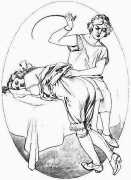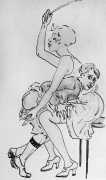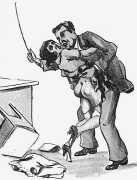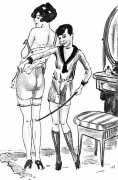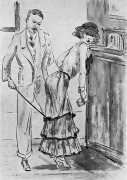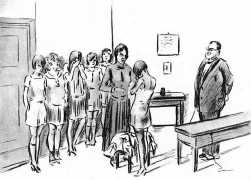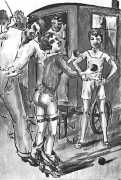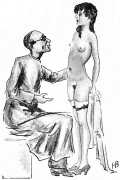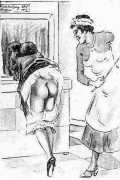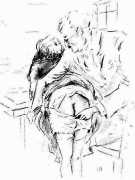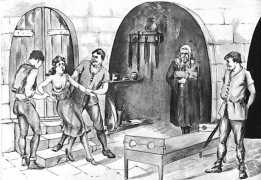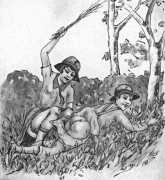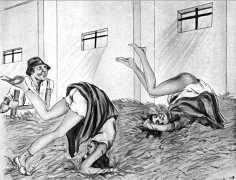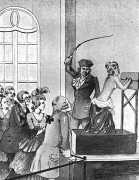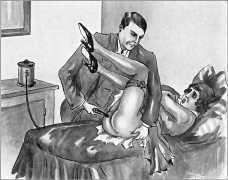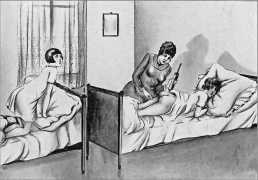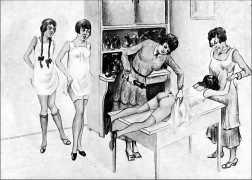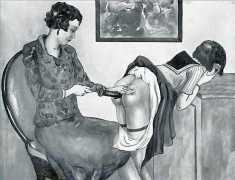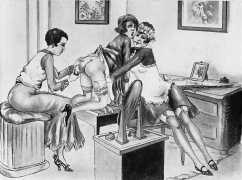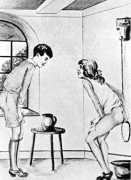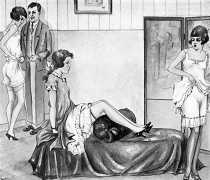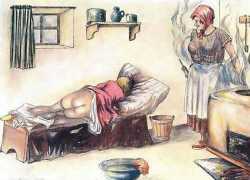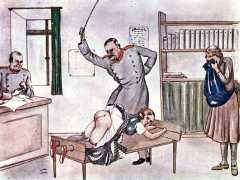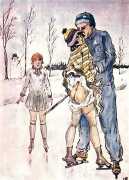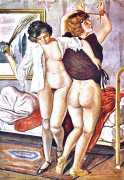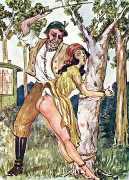It might be more accurate to call this enigmatic artist ‘Helga Bode’, since although more than fifty drawings and watercolours have been attributed to her nobody has ever come up with any credible biographical details. We only have a name because some of the material was included and attributed to ‘Helga Bode’ in several German semi-scientific sexology publications in the 1930s, notably in the volumes written by Ernst Schertel (1884–1958), a self-proclaimed expert on ‘the erotic complex’.
Psychoanalytic theory, especially the writings of Freud, made a deep impression on Schertel, and more than any other nacktkultur (naked culture) theorist he saw nudity as an expression of perversion and deviancy. Nakedness for him was neither a natural nor an unnatural condition, but a projection of fantasy with a great power to surprise. This power of surprise depended on the perception that nudity was the revelation of something more than a consciously formed ideal – it was the revelation of unconscious desires that were hidden from the body that felt them. Schertel understood nudity as the exposure of a complex, primal exchange of power between the observer and the observed. Nudity was a mode of communicating deeply ingrained structures of domination which manifested themselves through comparative pleasure relations between naked bodies.
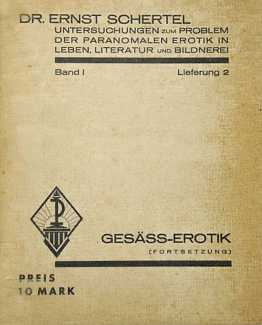 In the journals Skarabäus, Pelagius, Sonnige Welt and Soma, Schertel published, in addition to erotic drawings by artists such as Rudolf Schlichter, Christian Schad and Helga Bode, nude photographs by Frantisek Drtikol, Rolf and Lotte Herrlich, W. Kernspecht, Trude Fleischmann, Kitty Hoffmann, Wolf Haarhaus, Madame D’Ora, Manasse, Hilde Kupfer-Meyer, Edith Barakovic, Richard Giesecke and Marta Vietz.
In the journals Skarabäus, Pelagius, Sonnige Welt and Soma, Schertel published, in addition to erotic drawings by artists such as Rudolf Schlichter, Christian Schad and Helga Bode, nude photographs by Frantisek Drtikol, Rolf and Lotte Herrlich, W. Kernspecht, Trude Fleischmann, Kitty Hoffmann, Wolf Haarhaus, Madame D’Ora, Manasse, Hilde Kupfer-Meyer, Edith Barakovic, Richard Giesecke and Marta Vietz.
As well as his books about sex, including Der Erotische Komplex (The Erotic Complex) in two volumes, and Flagellantismus in Literatur und Bildnerei (Flagellation in Literature and Art), Schertel is best known for his 1923 book Magie: Geschichte, Theorie, Praxis (Magic: History, Theory and Practice), which among other influences was one of the most-heavily annotated books in Adolf Hitler’s personal library, a copy which had been presented to him personally by Schertel. Schertel had an astonishingly diverse career, including running an eight-member dance troupe, the Traumbuhne Schertel, which was active from 1925 to 1927.
We are very grateful to our Russian friend Yuri for researching the work of this artist and for supplying the images.

